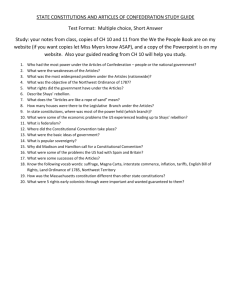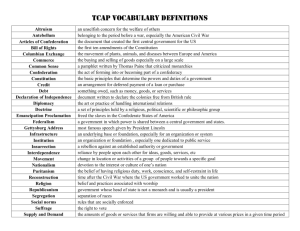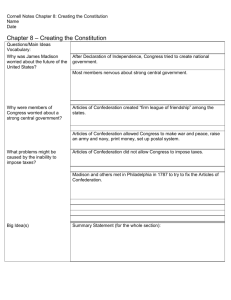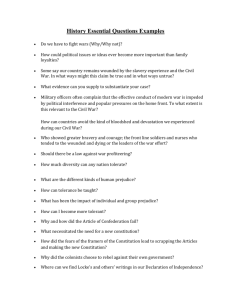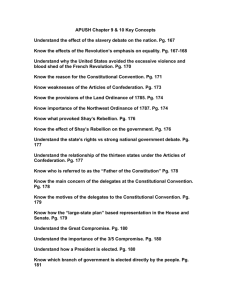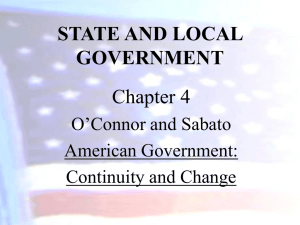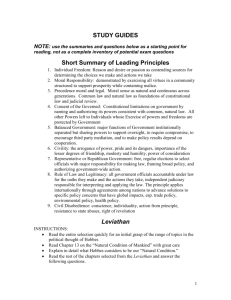Ch_ 6 Review questions
advertisement
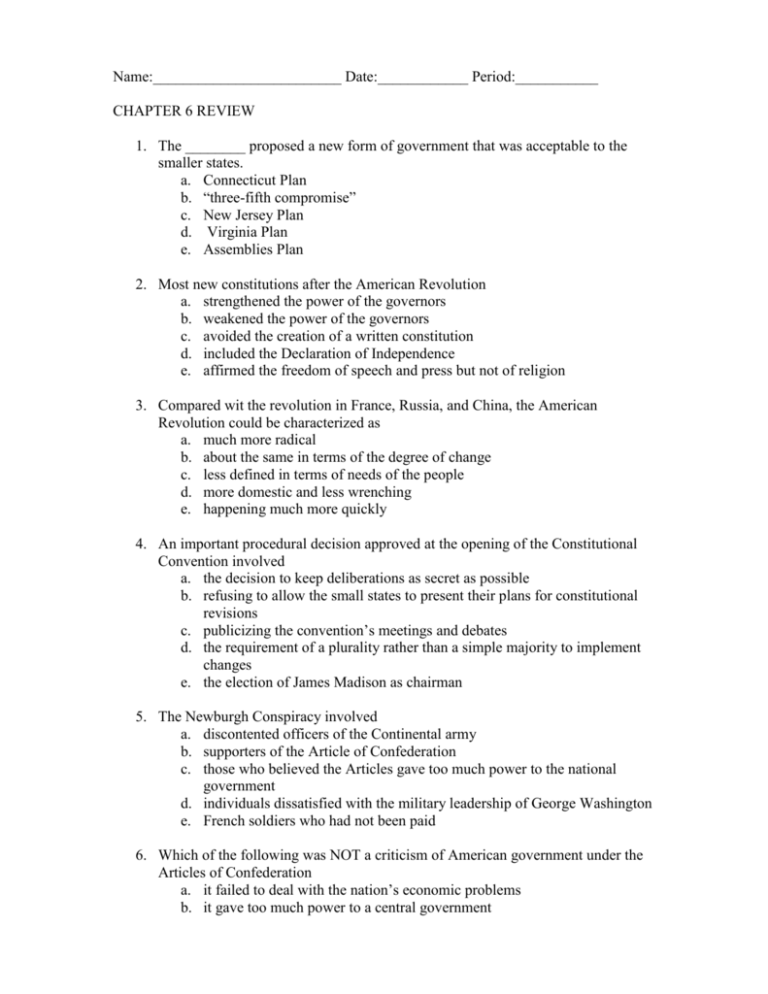
Name:_________________________ Date:____________ Period:___________ CHAPTER 6 REVIEW 1. The ________ proposed a new form of government that was acceptable to the smaller states. a. Connecticut Plan b. “three-fifth compromise” c. New Jersey Plan d. Virginia Plan e. Assemblies Plan 2. Most new constitutions after the American Revolution a. strengthened the power of the governors b. weakened the power of the governors c. avoided the creation of a written constitution d. included the Declaration of Independence e. affirmed the freedom of speech and press but not of religion 3. Compared wit the revolution in France, Russia, and China, the American Revolution could be characterized as a. much more radical b. about the same in terms of the degree of change c. less defined in terms of needs of the people d. more domestic and less wrenching e. happening much more quickly 4. An important procedural decision approved at the opening of the Constitutional Convention involved a. the decision to keep deliberations as secret as possible b. refusing to allow the small states to present their plans for constitutional revisions c. publicizing the convention’s meetings and debates d. the requirement of a plurality rather than a simple majority to implement changes e. the election of James Madison as chairman 5. The Newburgh Conspiracy involved a. discontented officers of the Continental army b. supporters of the Article of Confederation c. those who believed the Articles gave too much power to the national government d. individuals dissatisfied with the military leadership of George Washington e. French soldiers who had not been paid 6. Which of the following was NOT a criticism of American government under the Articles of Confederation a. it failed to deal with the nation’s economic problems b. it gave too much power to a central government c. it failed to adequately confront threats from Britain and Spain along American borders d. it was unable to deal with the country’s fiscal instability e. its single legislative body gave some states an unfair advantage 7. The most obvious contradictions to the principles expressed in the founding of the American republic was a. the way women were treated b. the failure to allow businessmen a say in planning the nation’s future c. the continued existence of slavery in much of the nation d. the fact that some states continued to required property as a prerequisite for voting e. the failure to address matters of religion 8. A major fear of the Antifederalists was that a. voters would be too distanced from their representatives b. voters would have too much direct contact and thus influence on their representatives c. voters would corrupt their national representatives d. national representatives would rely too consistently on local voters for their ideas and decisions e. the average voter was not educated enough to make good decisions 9. How many states did not have to draft new constitutions, since they already had republican government as part of their colonial charters? a. none b. one –New York c. two- Rhode Island and Connecticut d. three- Rhode Island, New Jersey and South Carolina e. four – South Carolina, North Carolina, Georgia, Virginia 10. Shay’s Rebellion involved a. discontented New England merchants b. western settlers of freer traded with Great Britain c. supporters of freer trade with Great Britain d. discontented farmers in Massachusetts e. Continental Army officers who had denied their pensions 11. Those who opposed ratification of the Constitution were called a. Radicals b. States’ Righters c. Federalists d. Antifederalists e. Nationalists 12. The Federalists was a series of essays written by a. Washington and Adams b. Thomas Jefferson c. Madison, Hamilton and Jay d. Hamilton and Franklin e. Madison, Jefferson and Hamilton 13. The Constitutional Convention took place in a. 1781 b. 1778 c. 1791 d. 1793 e. 1787 14. The most important result of the Annapolis Meeting of 1786 was a. that it added support for the Articles of Confederation b. the establishment of new, more efficient trade regulations for the United States c. the settlement of problems involving Spain’s control of the Mississippi River d. the nationalists’ recommendation to Congress for a convention to revise the Articles of Confederation e. the growing political and influence of James Madison True or False: 15. __________ Most new states constitutions dramatically increased the power of state governors 16. __________ Most prominent (important) political figures supported the Constitution 17. __________ The Bill of Rights became law before the Constitution was ratified 18. __________ After the American Revolution, several northern states abolished slavery. 19. ___________ Under the terms of the Northwest Ordinance of 1787, slavery was explicitly allowed in the Northwest Territory 20. ___________ Shay’s rebellion demonstrated the ability of the national government to maintain order and stability in the United States.


